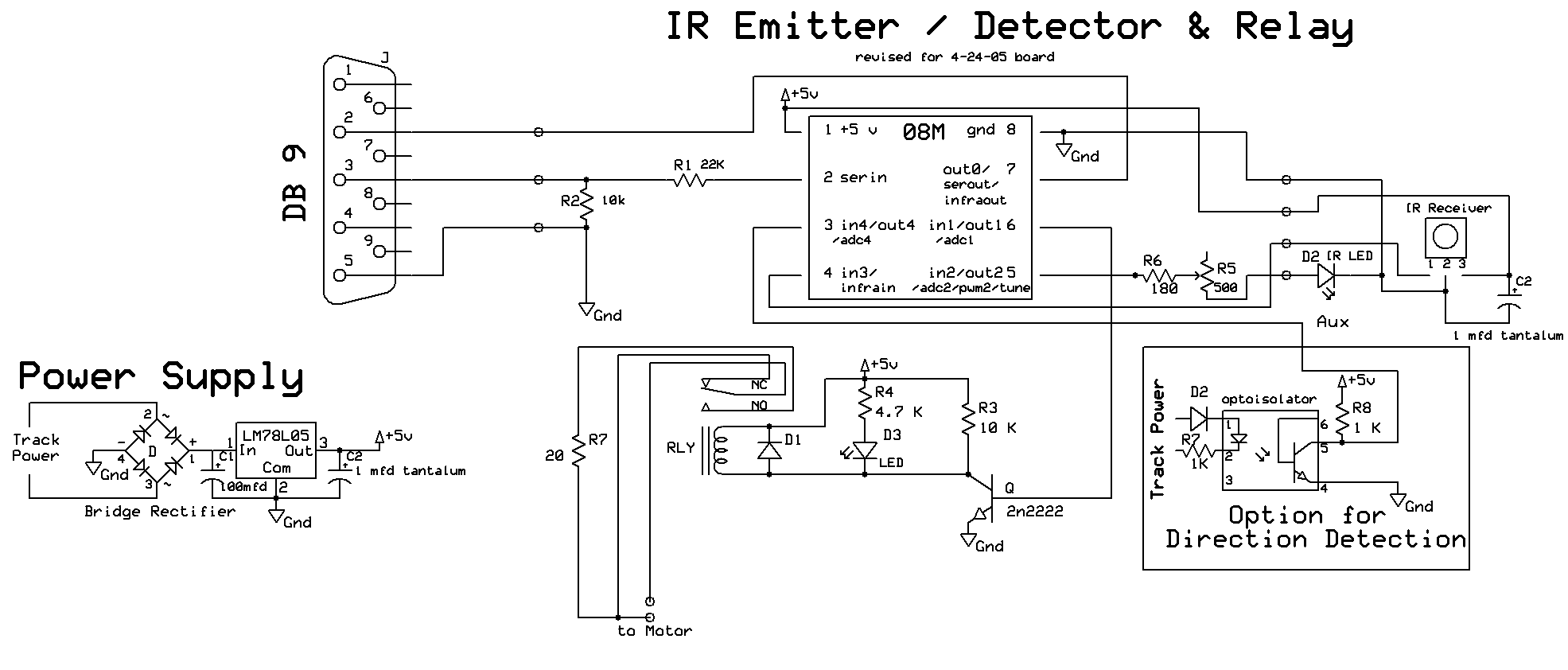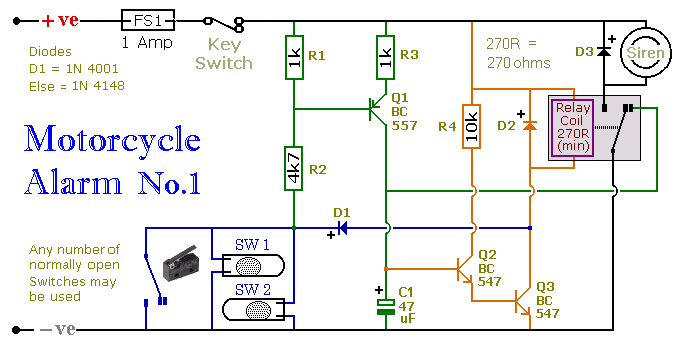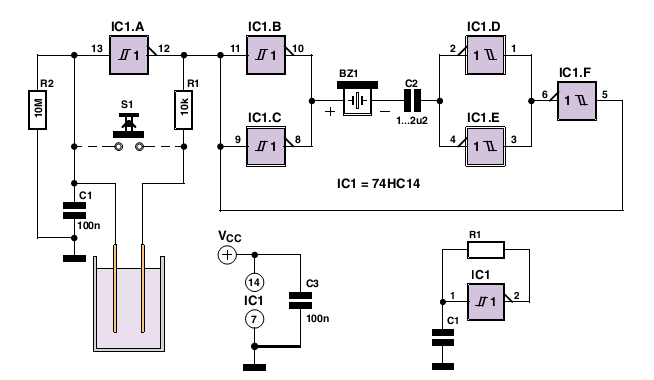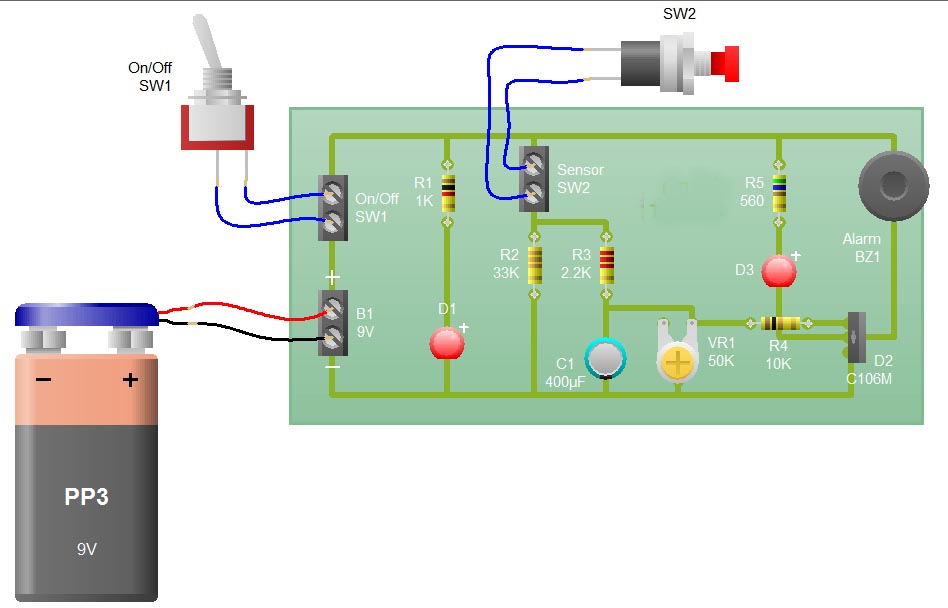
Rain Alarm

Rain Alarm. This circuit activates an alarm when its sensor comes into contact with water. It utilizes a 555 astable multivibrator.
The rain alarm circuit operates on the principle of detecting moisture through a sensor that can be designed using two conductive plates or probes. When water bridges the gap between these plates, it changes the resistance and allows current to flow, triggering the alarm mechanism. The heart of this circuit is the 555 timer configured in astable mode, which continuously oscillates between high and low states.
In this configuration, the 555 timer's output can be connected to a speaker or an LED to indicate the presence of water. The frequency of oscillation is determined by the resistors and capacitors connected to the 555 timer, allowing for customization of the alarm tone or visual indication.
To build the circuit, the following components are typically required:
- A 555 timer IC
- Two conductive probes for the moisture sensor
- Resistors (typically in the range of kilo-ohms)
- A capacitor (usually in the microfarad range)
- A speaker or LED for the alarm output
- A power supply (typically a battery or DC power source)
The probes should be placed in a location where they can effectively detect rainwater. The resistors and capacitor values can be adjusted to set the desired sensitivity and response time of the alarm. When the sensor is activated, the 555 timer switches its output state, activating the alarm and alerting users to the presence of moisture.
Overall, this rain alarm circuit provides a simple yet effective solution for detecting rainfall, making it useful for various applications, including irrigation systems, automated greenhouses, and home safety systems.Rain Alarm. This circuit gives out an alarm when its sensor is wetted by water. A 555 astable multivibrator is used. 🔗 External reference
The rain alarm circuit operates on the principle of detecting moisture through a sensor that can be designed using two conductive plates or probes. When water bridges the gap between these plates, it changes the resistance and allows current to flow, triggering the alarm mechanism. The heart of this circuit is the 555 timer configured in astable mode, which continuously oscillates between high and low states.
In this configuration, the 555 timer's output can be connected to a speaker or an LED to indicate the presence of water. The frequency of oscillation is determined by the resistors and capacitors connected to the 555 timer, allowing for customization of the alarm tone or visual indication.
To build the circuit, the following components are typically required:
- A 555 timer IC
- Two conductive probes for the moisture sensor
- Resistors (typically in the range of kilo-ohms)
- A capacitor (usually in the microfarad range)
- A speaker or LED for the alarm output
- A power supply (typically a battery or DC power source)
The probes should be placed in a location where they can effectively detect rainwater. The resistors and capacitor values can be adjusted to set the desired sensitivity and response time of the alarm. When the sensor is activated, the 555 timer switches its output state, activating the alarm and alerting users to the presence of moisture.
Overall, this rain alarm circuit provides a simple yet effective solution for detecting rainfall, making it useful for various applications, including irrigation systems, automated greenhouses, and home safety systems.Rain Alarm. This circuit gives out an alarm when its sensor is wetted by water. A 555 astable multivibrator is used. 🔗 External reference





